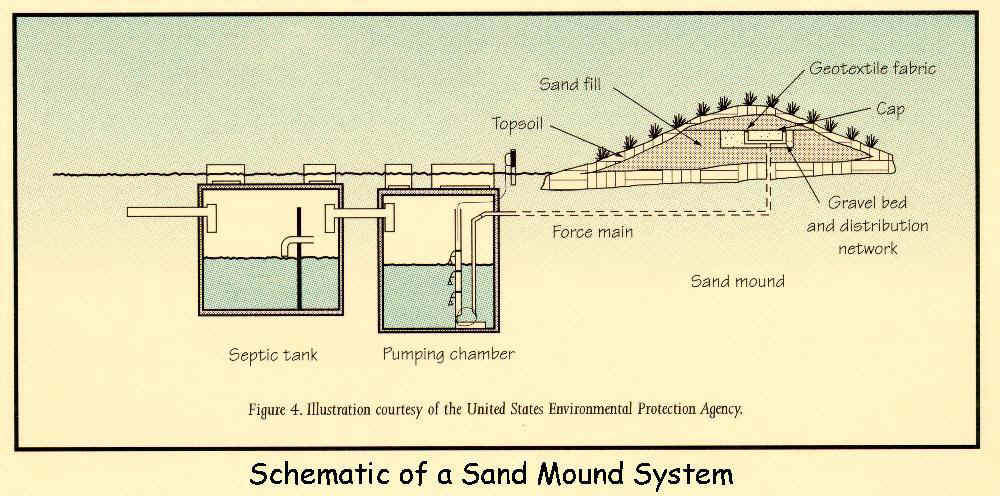|
Waste water flows from the house to the septic tank. The tank is designed to retain waste water and allow heavy solids to settle to the bottom. These solids are partially decomposed by bacteria to form sludge. Grease and light particles float, forming a layer of scum on top of the waste water. Baffles installed at the inlet and outlet of the tank to help prevent scum and solids from escaping. |
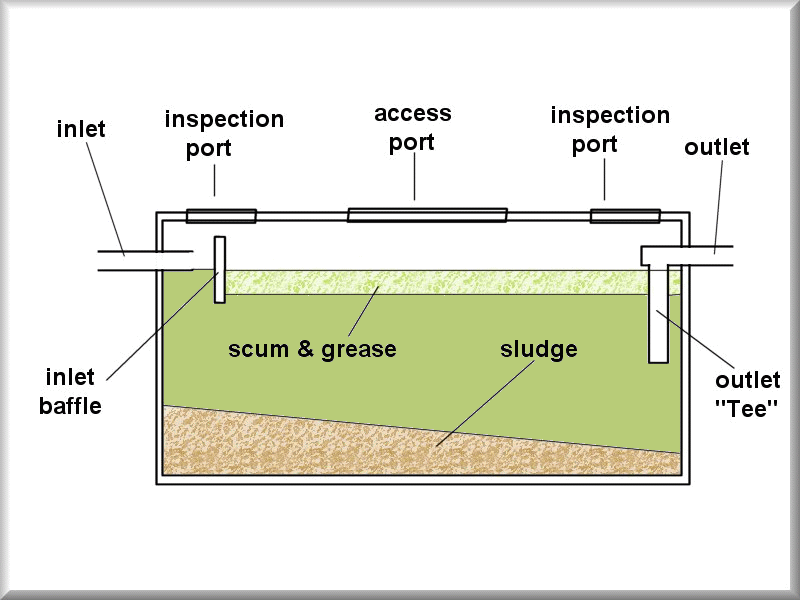 |
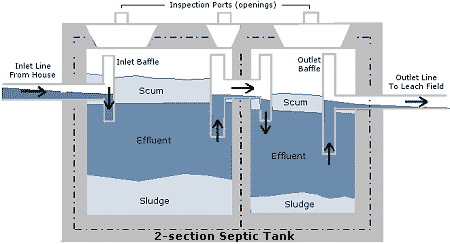 |
Newer septic tanks can have a partial concrete dividing wall in the center, thus making two compartments. This helps ensure the sludge does not get forced out of the baffle into the drain field. Newer tanks can also have two manhole covers, one above each baffle. |
| A solid pipe leads from the septic tank to a distribution box where the waste water is channeled into one or more perforated pipes set in trenches of gravel. Here the water slowly infiltrates (seeps) into the underlying soil. Dissolved wastes and bacteria in the water are trapped or adsorbed to soil particles or decomposed by microorganisms. This process removes disease-causing organisms, organic matter, and most nutrients (except nitrogen and some salts). The purified wastewater then either moves to the ground water or evaporates from the soil. Trench systems are the most common type of system used in new home construction. | 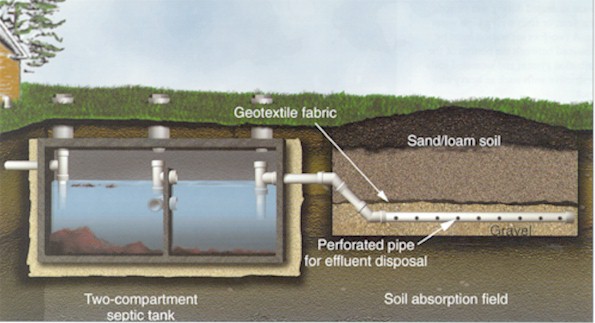 |
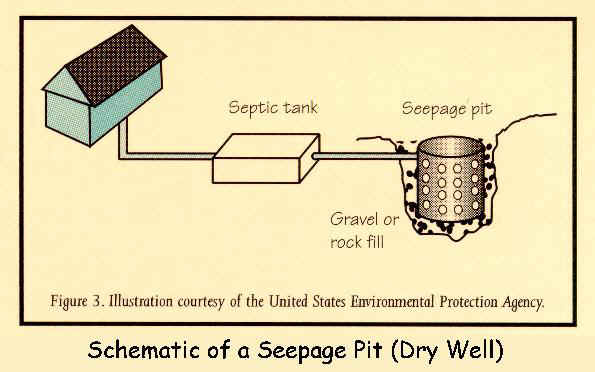 |
An alternative to the common drain field is the Seepage Pit (Dry Well). In this type, liquid flows to a pre-cast tank with sidewall holes, surrounded by gravel. (Older versions usually consist of a pit with open-jointed brick or stone walls.) Liquid seeps through the holes or joints to the surrounding soil. |
